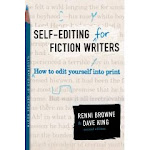
We're excited to introduce our new book doctor, Edie Melson!
Edie, thank you for joining us and being willing to donate your time to help writers improve their craft.
***
Edie Melson is a freelance writer and editor with a passion for life’s stories. She loves to share her 16+ years experience in the field of writing through mentoring and teaching others. She began as a technical writer in the 80’s and quickly moved into freelance writing, a perfect fit for someone who loves new challenges. Numerous articles and devotions, including those for Focus on the Family, Crosswalk.com, Christiandevotions.us, Inspiredmoms.com as well as Bible studies have flowed from her pen to her audience.
She also has a thriving copy writing business with multiple clients and teaches others how to write for the internet with an emphasis on SEO/keyword formatting. She began sharing her knowledge of the writing industry with other writers in 2001, by starting a local writer’s group, The Christian Writer’s Den, with colleague, Vonda Skelton. They have also co-directed and taught an annual writer’s retreat since 2002 and are members of a weekly, fiction writers critique group. From March of 2009 through March 2010 she worked as Managing Editor for Centered Magazine. She has a popular writing blog, www.thewriteconversation.blogspot.com.
She’s a member of several professional writing organizations, including The Christian Pen, The Christian Writer’s View I and ACFW, where she serves as the Editor for the Southeast Zone Newsletter and staff reviewer for Afictionado Magazine. Married 29 years to husband, Kirk, they have raised three sons.
Please welcome Edie, everyone. We're so happy she can join us!
***
Edie Melson is a freelance writer and editor with a passion for life’s stories. She loves to share her 16+ years experience in the field of writing through mentoring and teaching others. She began as a technical writer in the 80’s and quickly moved into freelance writing, a perfect fit for someone who loves new challenges. Numerous articles and devotions, including those for Focus on the Family, Crosswalk.com, Christiandevotions.us, Inspiredmoms.com as well as Bible studies have flowed from her pen to her audience.
She also has a thriving copy writing business with multiple clients and teaches others how to write for the internet with an emphasis on SEO/keyword formatting. She began sharing her knowledge of the writing industry with other writers in 2001, by starting a local writer’s group, The Christian Writer’s Den, with colleague, Vonda Skelton. They have also co-directed and taught an annual writer’s retreat since 2002 and are members of a weekly, fiction writers critique group. From March of 2009 through March 2010 she worked as Managing Editor for Centered Magazine. She has a popular writing blog, www.thewriteconversation.blogspot.com.
She’s a member of several professional writing organizations, including The Christian Pen, The Christian Writer’s View I and ACFW, where she serves as the Editor for the Southeast Zone Newsletter and staff reviewer for Afictionado Magazine. Married 29 years to husband, Kirk, they have raised three sons.
Please welcome Edie, everyone. We're so happy she can join us!











